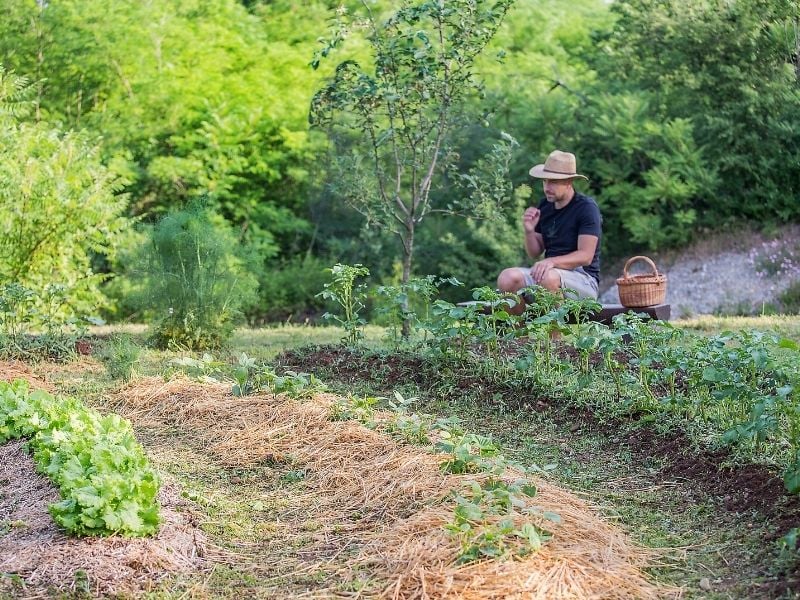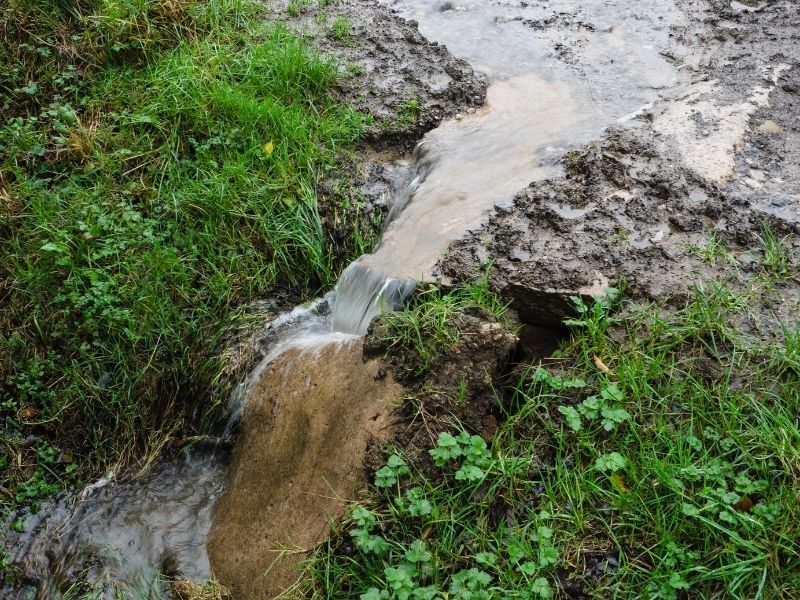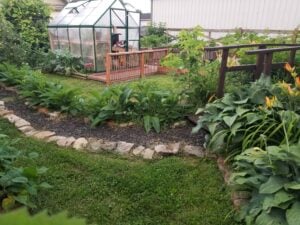Often when I have tried to quickly explain to someone what a swale is a question sometimes gets asked: “what’s the difference between a swale and a ditch?”

Swales and ditches are similar in a few ways, it is often said about swales that they are ditches on contour. That is true but this fact changes the function. To put it simply, a ditch is made to carry water away and a swale is made to collect and slowly release water into the landscape.
What Is a Permaculture Swale, and How Does It Work?
A permaculture swale is indeed a shallow trench constructed along the land’s contour, with soil from the trench used to create a berm mostly on the downhill side. A contour line has the same height at sea level at all places. As a result, water throughout the landscape is captured by a trench all along a contour, which slows and spreads it throughout the contour line.
This action helps to prevent erosion while also retaining water in which it is required. Permaculture swales can reduce food production costs while also enhancing the surrounding environment. Each swale has its qualities that are tailored to the site’s conditions.
Is a Permaculture Swale a Good Idea For You?
Swales, unfortunately, aren’t appropriate in every setting. They work well on moderately sloping terrain but not on steep hills. Also, in extremely rainy climates, on-contour swales may hold too much water.
In these instances, Keyline design or check-log terraces are two solutions that have been tried and are worth investigating.
Why Would a Permaculture Swale Be Beneficial?
- Control stormwater discharge.
- They are a more convenient way of catching rain than a tank and barrel.
- They outperform tanks and barrels in terms of efficiency.
- Create self-contained ecosystems.
1. Stormwater runoff is reduced by using a permaculture swale
Stormwater runoff has become the most significant cause of water contamination, and it is a major issue in most cities. Because municipalities see water as a liability, they try to get rid of it as quickly as possible. They have every reason to be concerned about flooding, given the current infrastructure in cities.
Sending water away as rapidly as possible, on the other hand, has resulted in serious environmental stewardship issues. Because the overburdened sewer system mixes stormwater and sewage in many places during heavy rains.

2. Using a permaculture swale rather than a tank or barrel to catch rain is a more passive alternative
Rainwater collection in tanks and barrels necessitates some engineering expertise and maintenance.
- Purchase a large number of parts.
- Connect the tank to the downspout.
- Create a network of tanks.
- Either return the overflow to the sewer or direct it into the landscape.
- Replace mosquito dunks regularly and wash out all the barrels at a minimum once a year.
3. Swales are more effective than tanks in permaculture
Organic matter absorbs water similar to a sponge and can readily hold several times its weight in soil. If our lawns were filled in one foot of rich soil, it would store as much rainwater as a three-inch-deep lake in the yard area. Installing a container large enough to catch so much water would be prohibitively expensive.
4. A self-sustaining ecosystem is created by a permaculture swale
Swales collect water and channel it to where it’s needed: the soil. Swales divert water downward into an underground reservoir rather than letting it run off or pool on the surface. Microorganisms are drawn to this subsurface pool. Suddenly, the earth comes to life, and we’re producing organic materials and fertilizer where we need them.
Therefore, a swale results in fewer inputs, saving money and time. The more organic matter that accumulates, hence more moisture it can hold. The network can better tolerate floods and droughts with more organic materials.
When Should You Build a Swale?
Swales are ideal for those who want to create no-dig garden beds because the topsoil is provided by digging the (swale) walkways. Furthermore, a swale is ideally used to deliver water to plants in the regeneration of degraded, arid, or semi-arid and mostly bare hillsides.
Another reason to construct a swale is to divert rainwater away from an erosion-causing road. This will cause rainwater to take a different course to distribute silt, nutrients, and organic materials.
What Is a Ditch?
A ditch, despite the apparent similarities to a swale, is the polar opposite of a swale in its function. A ditch’s purpose is to carry water away, typically for drainage; hence it is sloped along its length and has a narrowly defined cross-section.

How a Ditch Could Be Beneficial?
There are places where a ditch is appropriate and preferable over a swale. Environments that are prone to several inches of annual rainfall and are low-lying areas can be prone to flooding. Because there is plenty of rainfall swales aren’t necessary to supply water to the landscape. This is a place where a ditch may be necessary and best for the land.
Helpful Resource
- Amazon Kindle Edition
- Barnes, Douglas (Author)
- English (Publication Language)
Last update on 2024-07-26 / Affiliate links / Images from Amazon Product Advertising API




